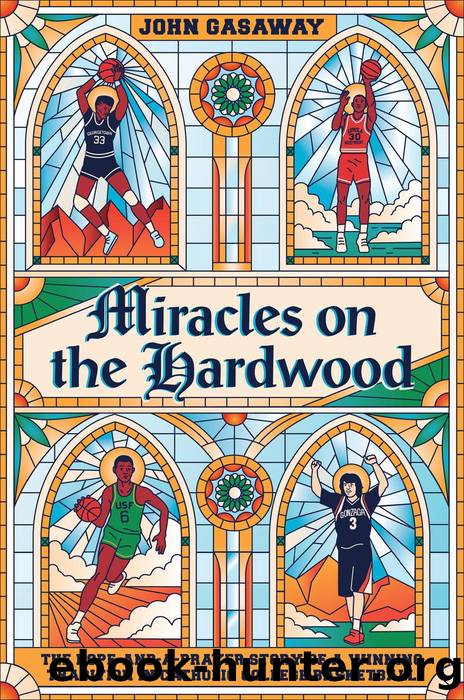Miracles on the Hardwood by John Gasaway

Author:John Gasaway [Gasaway, John]
Language: eng
Format: epub
Published: 2021-03-16T00:00:00+00:00
On October 30, 1965, a letter bearing a postmark from Hazleton, Pennsylvania, was mailed to Notre Dame head football coach Ara Parseghian. âKnowing that you have little time to waste,â the note began, âI donât expect you to answer my letter in the near future, but I would appreciate a short reply after the season, if your busy schedule permits.â The writer continued: âEventually, Iâd like to coach on the college level. My big dream is to coach basketball at Notre Dame.â The letter was signed by the 24-year-old head coach at St. Gabrielâs High School in Hazleton, Dick Phelps.
Richard Phelps owed his nickname, Digger, to his fatherâs line of work (funerals), and he would wait years before receiving a response from South Bend. When Phelps sent his letter, Johnny Dee was 42 years old and earning positive press as he prepared for his second season as head coach of the Fighting Irish. During Deeâs seven years at Notre Dame, he built a recruiting pipeline to the greater Washington, DC, area that would pay dividends for many seasons to come. The cream of the DC-to-South Bend crop was Austin Carr, a transcendent talent from Mackin Catholic who, along with Artis Gilmore, Curtis Rowe, and Howard Porter, was one of the most highly sought recruits nationally in 1967. Dee managed to win that battle, and Carr, in a remarkable career from 1968 to 1971, would manage to outperform his advance billing.
Notre Dame would need players of Carrâs caliber to keep pace in what was shaping up as an increasingly competitive Catholic basketball landscape in the Midwest. After years as the ultimate example of an independent program that seemingly ignored the NCAA tournament entirely in favor of the NIT, Dayton felt the winds of change blowing its way in the mid-1960s. Tom Blackburn retired as coach, and Don Donoher, like McGuire and Dee, took the reins of his new program as of the 1964â65 season. One difference between Donoher and his predecessor became apparent that first year, when UD accepted an invitation to play in the 1965 NCAA tournament. It was just the second such appearance in Daytonâs history and, indeed, the first since the NCAA adopted its rule in the early 1950s mandating that teams appear in only one postseason tournament.
Rather than journeying to the Big Apple, fans of the Flyers traveled to Lexington, Kentucky, in 1965, and to Iowa City, Iowa, in 1966. In those locales, UD was paired in both years in the regional semifinals with the reigning No. 1 team in the nationâfirst, Michigan, and then Kentucky. Dayton lost both games, but by the time the 1967 NCAA tournament rolled around, Donoherâs luck was improving with respect to the brackets. This time, the Flyers didnât run up against the No. 1 team until the national championship game. To make it that far, UD won overtime contests against Western Kentucky and Virginia Tech, as well as a one-point game against Tennessee. This good fortune was expected by some observers
Download
This site does not store any files on its server. We only index and link to content provided by other sites. Please contact the content providers to delete copyright contents if any and email us, we'll remove relevant links or contents immediately.
Plagued by Fire by Paul Hendrickson(16630)
The 5 Love Languages: The Secret to Love That Lasts by Gary Chapman(8481)
How to Bang a Billionaire by Alexis Hall(7404)
Wonder by R. J. Palacio(7049)
The Institute by Stephen King(6233)
The Space Between by Michelle L. Teichman(6079)
The Thirst by Nesbo Jo(5778)
The Testaments by Margaret Atwood(5771)
Assassin’s Fate by Robin Hobb(5228)
Wiseguy by Nicholas Pileggi(4581)
The Night Circus by Erin Morgenstern(4412)
Bittersweet (True North #1) by Sarina Bowen(4329)
The MacArthur Bible Commentary by John MacArthur(4227)
Spare by Prince Harry The Duke of Sussex(4188)
The Templars by Dan Jones(4181)
Everything Happens for a Reason by Kate Bowler(4061)
Gerald's Game by Stephen King(3913)
Royally Matched (Royally Series) by Emma Chase(3856)
Tuesdays with Morrie by Mitch Albom(3828)
